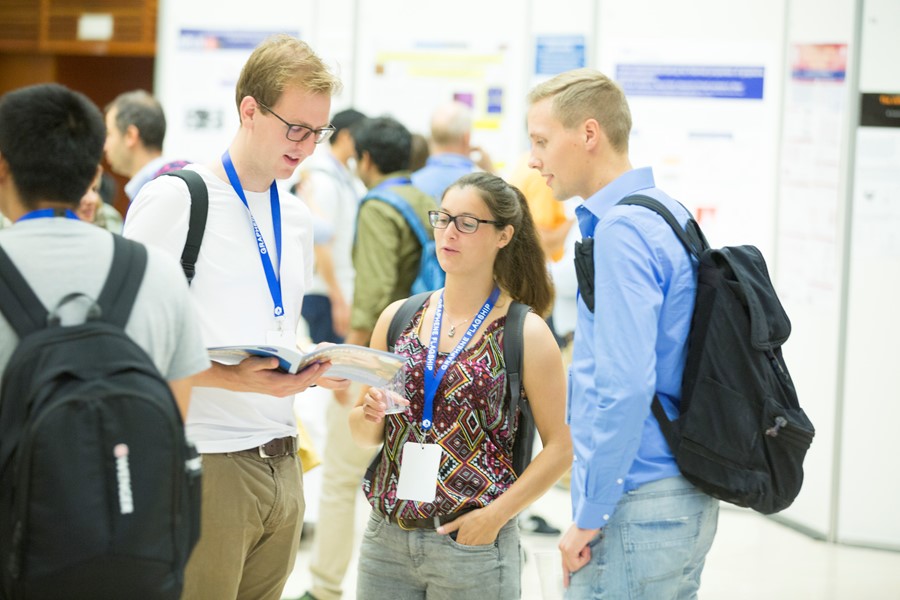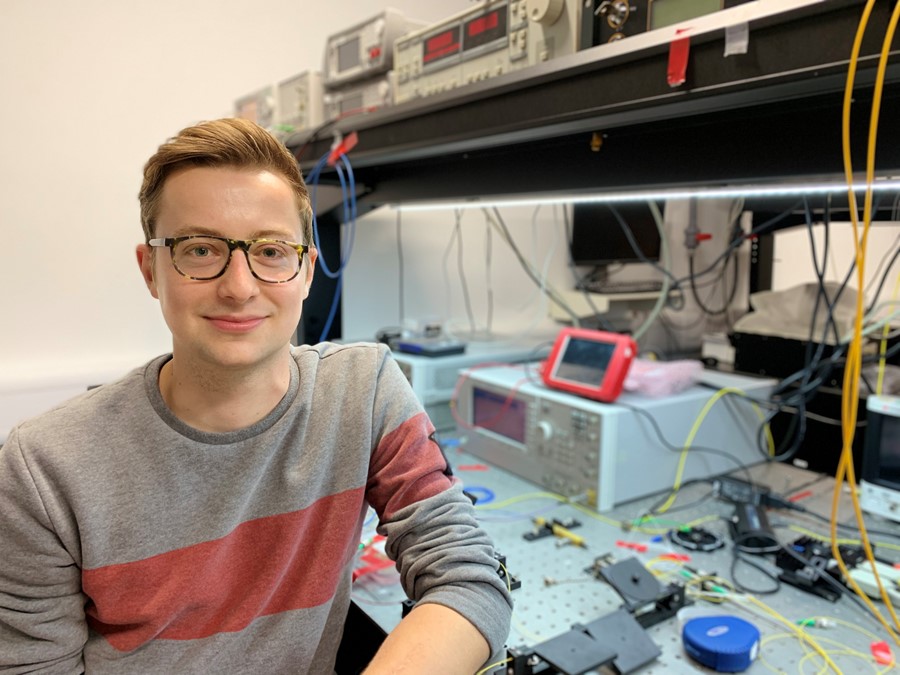The future of graphene – Part II
The Graphene Flagship has long been committed to investing in young, talented scientists to assist in the research and development of graphene and related materials. We interviewed early career researchers from the Graphene Flagship's Core partners, AMs and PPs about their time collaborating with the project and their expectations ahead of Graphene Week 2019.
Where will you be in 2030? The Graphene Technology and Innovation Roadmap predicts that graphene-enabled on-chip optical data, spin-logic devices and mind-blowing 6G networks will all be in development — and who knows what other innovations could emerge by then. That said, none of this will be possible without the minds and efforts of those at the forefront of graphene research, including our network of early career researchers.
Marian Baah, a Ph.D student at the Institute of Photonics in the University of Eastern Finland, a Graphene Flagship Associated Member, is impressed about the use of graphene nanoplatelets for water filtration. She is working on the full integration of graphene with waveguide technology. "My interests are geared toward the integration of thin films with optoelectronic devices. I use graphene for fabrication of optical devices and in conjunction with waveguides to fabricate optical modulators and sensors", she explains. "I have every intention of starting up a small nanofabrication company once I am done with school", that is why Baah is looking forward to attending the scientific writing and start-up creation workshops of the GW2019.
Damjan Iveković, a Ph.D student at the Ruđer Bošković Institute in Zagreb, the largest Institute for Natural Sciences in Croatia, is working at the Graphene Flagship Partnering Project NU-TEGRAM. He is presenting the poster "Effects of the ion charge state during swift heavy ion irradiation of graphene" at the GW2019. Iveković is impressed about the graphene application for various stretchable electronics. As he explains, "it is similar to our research as we are working on a graphene-polymer composite nanomembrane, where graphene is filter element and thin polymer film gives mechanical stability and flexibility. I am using molecular dynamics simulations to get insight in defect production in graphene caused with high-energy ion irradiation". He is also looking forward to participate in the GW2019 "to find people with similar interests so I can compare and validate my results of molecular dynamics simulations. Since I have only recently started my Ph.D study, I think the most interesting early career researcher session would be about scientific writing".
Jakob Ewald Muench works at the heart of the Graphene Flagship, researching new components for integrated photonics for datacom and telecom systems from the Cambridge Graphene Centre. Jakob will be attending Graphene Week 2019 to present the results from his collaboration with Dr Simone Schuler – an exciting project on photodetectors, entitled "Cavity-Enhanced Graphene Photodetector." Jakob will be attending sessions on sessions on optical electronics, photonics and of course, the Graphene Innovation Forum. "I'm most excited about the projects that I'm working on which are graphene-based transceivers," Jakob says. "The Graphene Flagship has allowed me to work with people that are brilliant at what they do. Looking to the future, I'm not sure whether I will focus on academic or industrial research, but I'd like to continue to be challenged on a daily basis."
David Mendoza's work is also closely linked to the Graphene Flagship. He is based at Graphene Flagship partner Instituto de Ciencia de Materiales de Madrid (ICMM), where his research focuses on the growth of graphene multilayer structures using physical vapour deposition (PVD) methods. When asked which area of graphene research he thinks is the most exciting, he said "It's impossible to choose just one! Superconducting twisted bilayer graphene is really impressive, but it's still too soon to know whether it will have real applications. Scientists are also creating flexible electronic devices and more environmentally-friendly and faster batteries — there are so many interesting fields of research, I simply can't decide." He attended last year's Graphene Week in San Sebastián: "It was my first international conference, and I learned a lot – I came back to my laboratory with a really long list of new experiments I wanted to try out," he says. "At Graphene Week, you get a huge overview of the state of research on graphene and related layered materials," he continues. In Helsinki, David is most looking forward to the workshop on scientific writing. "In this field, the world needs to know what you do, otherwise, it's as if you've never done it."
Read the first part of this article here.
Notes
The support of the SCOPE project to the Graphene Flagship Partnering Division. The SCOPE project, funded by the European Commission, is providing support to institutions and researchers involved in Graphene Flagship's Partnering Projects and Associated Membersby granting several types of grants to help them integrate with the Graphene Flagship Core partners. Communication of research results is also offered via news articles and dissemination in social media. The Graphene Flagship Partnering Division is also supported by the SCOPE travel grants that make possible the attendance of their members to the governance meetings of the Graphene Flagship. Fostering the mutual benefits of the PPs, AMs and the Graphene Flagship Partnering Projects (PPs) and Associated Members (AMs) are research and innovation projects funded by regional, national, European and other sources (e.g., private industry). The concept of a PP was introduced by the EC to define the principles by which research teams or organisations, which are not part of the Graphene Flagship consortium, can be integrated by providing flexible and efficient mechanisms to perform research and innovation activities, which are in line with the overall Graphene Flagship objectives and be of mutual benefit to all parties. Being part of the partnering environment bring research collaborations in areas of mutual interest and engagement in roadmapping, among other benefits.
Contacts
Partnering Division and grants: graphene-eu@esf.org
Communication support: scope_project@fecyt.es

The Graphene Flagship has long been committed to investing in young, talented scientists to assist in the research and development of graphene and related materials. We interviewed early career researchers from the Graphene Flagship's Core partners, AMs and PPs about their time collaborating with the project and their expectations ahead of Graphene Week 2019.

Marian Baah, a Ph.D student at the Institute of Photonics in the University of Eastern Finland, a Graphene Flagship Associated Member.

Jakob Ewald Muench works at the heart of the Graphene Flagship, researching new components for integrated photonics for datacom and telecom systems from the Cambridge Graphene Centre.




